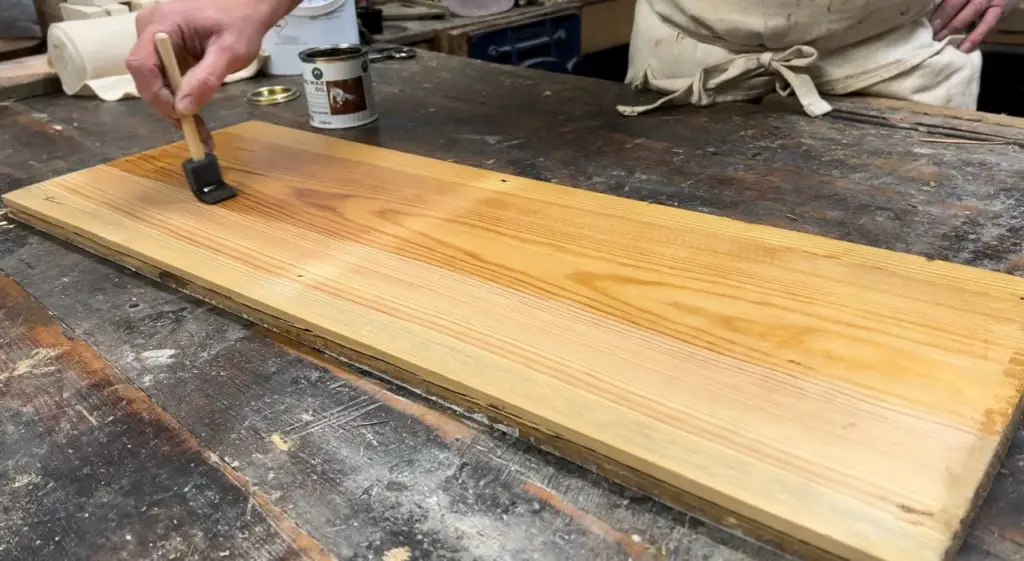Table of Contents
How to stop sap from coming out of wood?
Why Sap Comes Out of Wood
Sap (or resin) leakage, also called pitch bleeding, is common in softwoods like pine, fir, and spruce. It typically occurs because of:
- High temperatures: Heat causes sap to liquefy and ooze out.
- Improper drying: Wood that hasn’t been kiln-dried may retain resin.
- Fresh cuts: Newly milled or unfinished lumber may still contain active sap channels.

How to Stop Sap from Coming Out of Wood (Step-by-Step)
1. Heat Treatment (For Already Leaking Wood)
This is the best way to draw sap out before sealing the wood.
Tools needed:
- Heat gun or hair dryer
- Paper towels or rags
Steps:
- Use a heat gun or hair dryer to gently warm the affected area.
- The sap will liquefy; wipe it off immediately.
- Repeat until sap stops coming out.
⚠️ Caution: Don’t scorch the wood.

2. Sanding
Remove any hardened sap or stained finish.
Tools needed:
- Sandpaper (start with 80–100 grit, then move to 150–220 grit)
Steps:
- Sand off any glossy or sticky spots.
- Clean with a tack cloth.

3. Seal the Wood Properly
Once the sap is removed, sealing the wood is crucial to prevent future bleeding.
Recommended Sealers:
- Shellac (e.g., Zinsser B-I-N): Excellent stain blocker.
- Oil-based primer: Great for exterior or high-resin wood.
- Spar urethane: Durable and UV-resistant finish for outdoor wood.
Steps:
- Apply a stain-blocking primer (shellac-based preferred).
- Let it dry completely.
- Finish with a polyurethane, varnish, or paint.

Optional: Kiln-Dry the Wood (If Untreated)
If you haven’t used the wood yet and it’s still raw, kiln-drying is the most effective long-term solution.
- DIY method: Place the wood in a low-temperature oven (~120–150°F or 50–65°C) for several hours to cook out the sap.
- Professional method: Use commercial kiln services for large batches.
Maintenance Tips
- Avoid direct sunlight or heat: High temps can still activate residual sap.
- Recheck annually: Especially for exterior wood like decks or siding.
- Use stain-blocking primer when repainting.
Product Review Highlights
| Product | Type | Pros | Cons |
|---|---|---|---|
| Zinsser B-I-N Primer | Shellac-based primer | Excellent at blocking sap stains; fast-drying | Strong odor; needs good ventilation |
| Minwax Helmsman Spar Urethane | Protective topcoat | Durable outdoor protection | Slight yellowing on light wood |
| KILZ Premium Primer | Latex-based primer | Good general primer; affordable | Not as effective on heavy sap stains |
Summary: Best Practices
| Task | Recommendation |
|---|---|
| For existing sap | Heat gun + wiping, then seal |
| For unfinished wood | Kiln-dry if possible |
| Best sealer | Shellac-based primer + spar urethane |
| Worst mistake | Painting over sap without prep — it will bleed through |
FAQs
Why is sap coming out of my wood?
Sap leaks (also called pitch bleeding) occur when the wood’s natural resins are heated or exposed to sunlight. It’s most common in softwoods like pine, fir, or spruce, especially if the wood wasn’t properly kiln-dried.
Can I stop sap from coming out permanently?
Yes—if you remove the sap and seal the wood correctly. Heat treatment, sanding, and applying a shellac-based primer or oil-based sealer can lock in any remaining resin and prevent further leakage.
What happens if I paint over sap?
The sap will bleed through the paint, causing sticky spots and discoloration. You must remove or seal the sap first using proper primers (like Zinsser B-I-N).
Does sanding remove sap?
Sanding can remove hardened or surface sap, but if resin is still active inside the wood, it will continue to ooze out unless treated with heat and sealed.
How do I remove sticky sap from wood?
Use a heat gun or hair dryer to soften the sap, then wipe it off with a cloth. Clean the residue with mineral spirits or denatured alcohol before sanding and sealing.
What type of primer or sealer works best?
Best primer: Shellac-based (e.g., Zinsser B-I-N)
For outdoor use: Oil-based or spar urethane sealers
These block resin stains and protect from further leaks.
Can kiln-drying wood stop sap?
Yes. Kiln drying is the most effective way to crystallize and stabilize sap within wood, making it far less likely to leak over time.
READ ALSO: Do mineral spirits evaporate?
